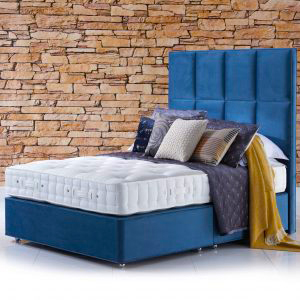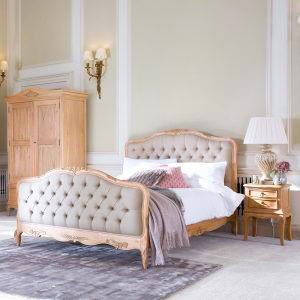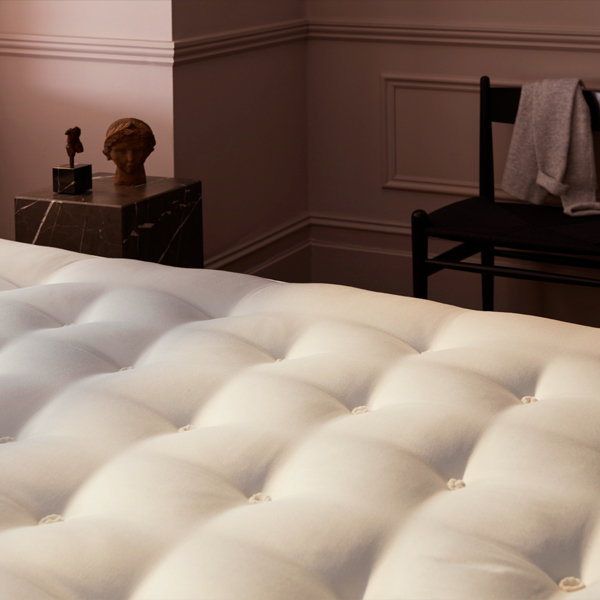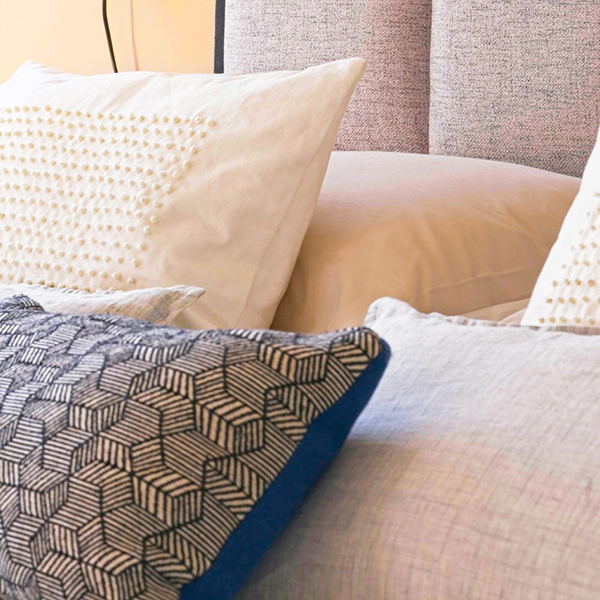Beds Explained
Confused by all the jargon surrounding the bedding industry? We’ve developed a simple guide to help you navigate the mysteries surrounding how to choose the perfect bed. Our experienced sales team are on hand seven days a week if you have any further questions. Don’t hesitate to give us a call.
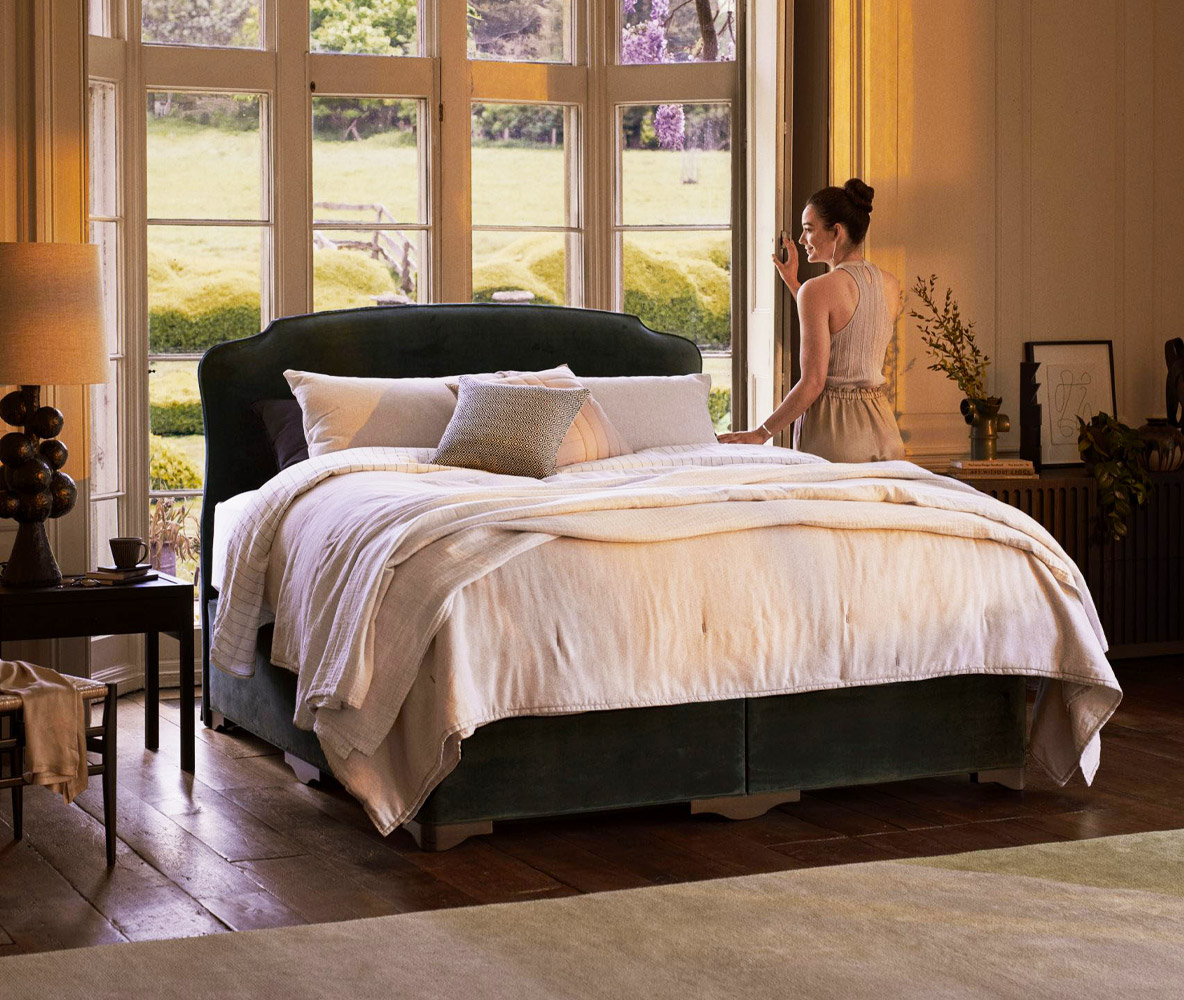
Luxury Divan beds
-
Divan Beds
A divan bed in its simplest terms is an upholstered box that sits under your mattress. Its primary purpose is to elevate your mattress from the floor making it easier to get in and out of. Divans are the UK’s most popular style of bed base and mirror the size of your mattress to maximise the free space in your bedroom. Divan bases are usually split in two parts *sometimes four to help with access into your bedroom. Standard divan bases are normally fitted with castors, which are moveable wheels. However, it is also popular to have a shallow divan base on legs for a lower, lighter, more modern look.
Divan bases can provide a number of storage options, ranging from pull out drawers, lift up ottomans or open spaced bases sometimes called hideaways, for maximum storage.
Divan bases can be customised by choosing from a wide range of fabrics. Selecting a matching headboard really helps to finish off the look!
-
Platform Top Divan Base
Platform top divans offer an entry point in the world of bed bases. They follow the upholstered wooden box construction and have a rigid, solid top ideal for those looking for a firmer feel.
-
Firm Edge Divan Base
The top of a firm edge divan base has a solid timber perimeter with a sprung interior section to help cushion your mattress. You may be given an option to select an open coil spring or a pocket sprung system. Open coil is a spring system attached to the top of the wooden base. It provides a level of cushioning providing a softer feel whilst increasing the lifespan of your bed as the springs work in conjunction with your mattress to provide a luxurious level of support. The pocket sprung option is considered to be an upgrade from open coil. Individual springs are pocketed in material and housed as a collective on a solid wooden frame. The result is a more durable and supportive cushioning system which helps to reduce excess movement and relieve more pressure areas resulting in a better night’s sleep.
-
Sprung Edge Divan Base
Selected for an increased level of comfort & durability. A sprung edge base features springs that run to the very edge of the base. They are designed to offer a softer, more luxurious feel. Sprung edge bases are widely considered the perfect match for premium, high end mattresses.
-
TOP TIP
If you are considering buying a new mattress to go on an existing base, do a quick check to see if you have a platform top, slatted, firm edge or sprung edge system before heading in to see us. Your base can make a significant difference to the feel and longevity of your new purchase!
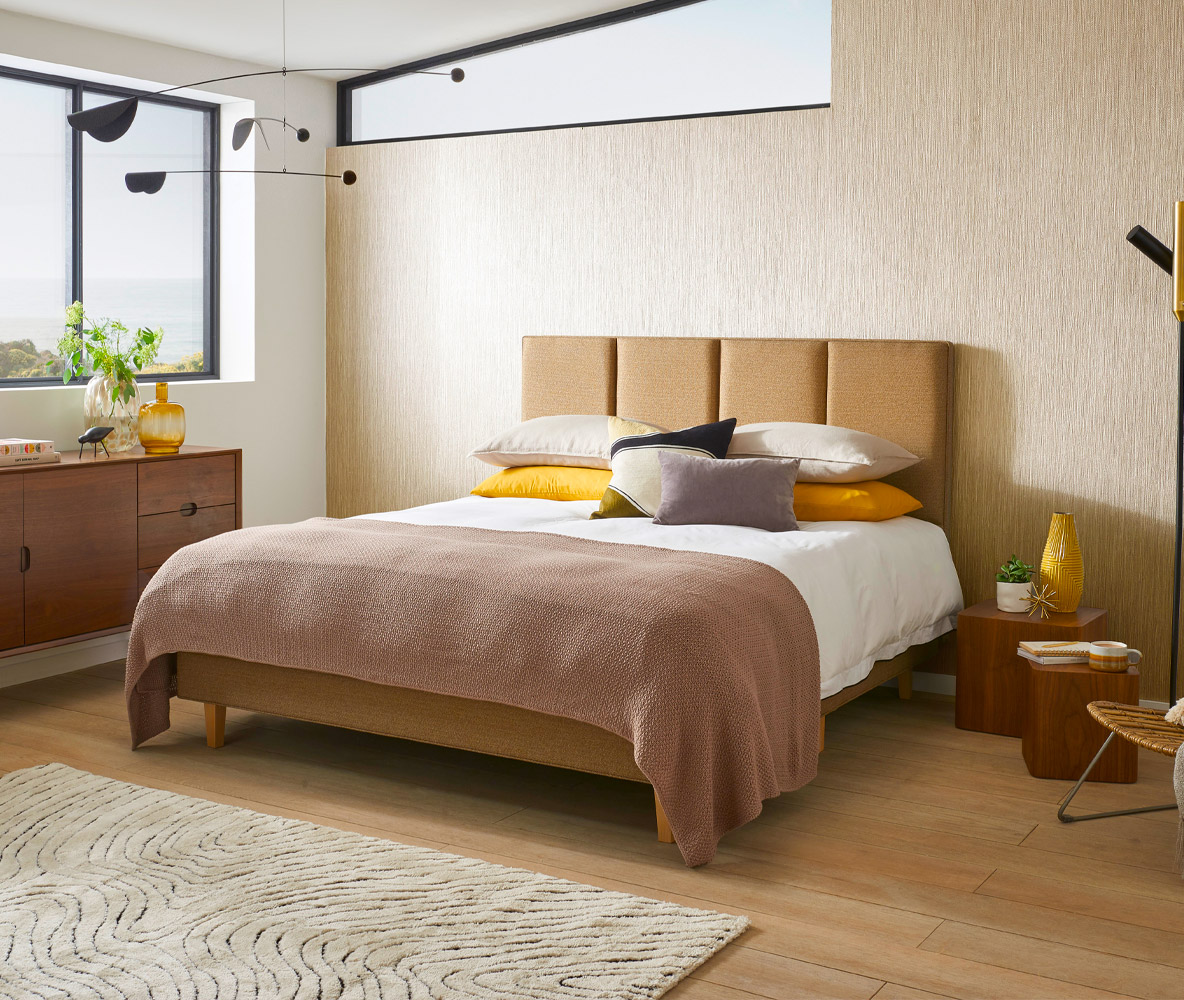
Hand crafted bedframes
-
Bed Frames
Are you looking to add style and sophistication to your bedroom? A great looking bedframe can add the character you’re after.
With such a wide range of designs available, all tastes and trends are catered for. Wooden frames offer a warming natural appearance while upholstered options allow for a softer more sumptuous look. Ideal for those who enjoy sitting in bed and reading a good book! Metal frames provide a wide choice of styles whether it’s a traditional brass bedstead look you’re after or a more modern, industrial loft apartment style is more in keeping; there’s bound to be a bedframe to suit your taste and space.
Bedframes are a popular and practical option because they are delivered flat packed, making them easy to manoeuvre through the house and into your bedroom. Once there, they take approximately 45 minutes to assemble *for those less confident with DIY it’s possible to request our `build your frame service` when placing an order. Most bedframes come with a slatted base which is designed to sit within the frame itself. Slats are usually made of beechwood and are slighty bowed to offer a feeling somewhat like a sprung divan base. They provide a softer more luxurious feel to your mattress and bedframe combination. Other than single beds most bedframes have a central rail with two sets of sprung slats on either side. The central rail is used to increase the frames’ ability to bear the weight of both you and your mattress. The alternative to sprung slats are fixed wooden bed planks. These are rigid and provide a firmer feel to your frame & mattress arrangement.
-
TOP TIP
We advise that the space between bedframe slats is no greater than 6 – 8cm (approx. 3 inches). This will ensure your mattress is given the right amount of support it needs to perform well over time.
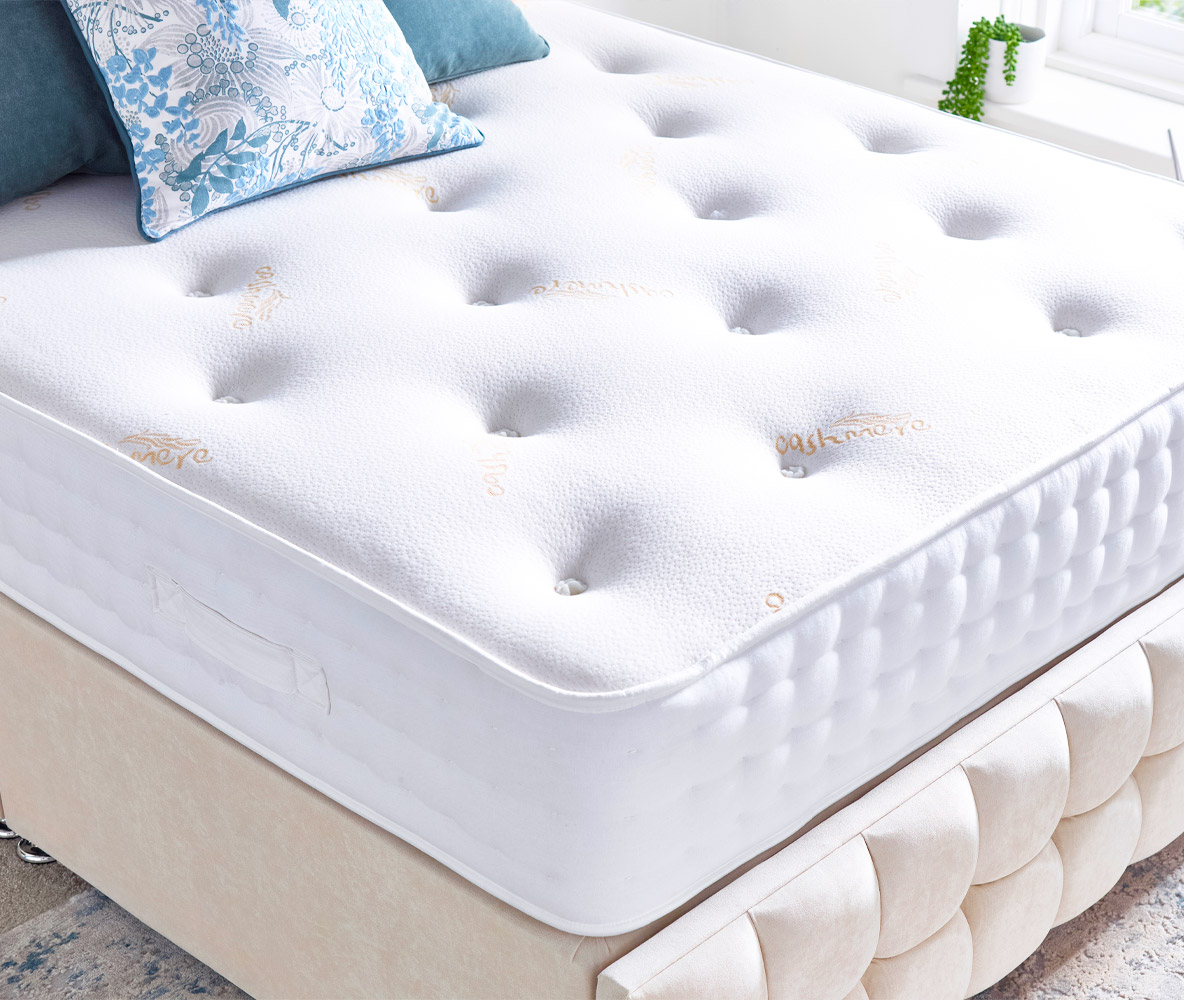
Premium mattresses
-
Mattresses
The mattress industry cannot be faulted for providing an enormous number of options and a sometimes-confusing range of choices. We hope a few simple tips will start you on the road to making a great decision providing you your perfect night’s sleep.
Choosing the perfect mattress can be a daunting prospect. The main types & styles of mattresses are pocket sprung, open coil, memory foam and latex. Our clients most popular choice of mattress is the more traditional pocket sprung.
Pocket springs are individual springs placed in their own fabric sleeve known as a pocket. This system allows them to adjust and contour individually to adapt to your shape to provide the right amount of support where needed. Working independently the springs help to reduce pressure points, controlling and limiting the amount of movement from one side of the mattress to the other.
How many springs should a good quality mattress have? We believe a good night’s sleep can be achieved on a mattress with a minimum of 1000 springs. However, higher quantities can give more support.
-
Open Coil
Open coil mattresses are a lower cost option. They are super for spare rooms or lighter levels of use. An open coil mattress is made from a continuous piece of wire coiled into multiple springs. They are arranged in rows and caged using a heaver gauge perimeter wire. Open coil spring counts are normally lower than a pocket spring mattress reducing the amount of support and increasing the transfer of movement from one sleeper’s side to the other.
-
Memory Foam
Memory foam is as its name suggests, an intelligent manmade synthetic. Visco Elastic is term often used to describe how the material adapts when it comes in contact with body heat. The material also reacts to weight with the aim of contouring and adapting around an individual’s shape. It is suggested that its ability to make a reactive mould can allow for improved posture while you sleep.
All foam mattresses are denser in construction than their pocket spring or open coil counterparts. This makes them better insulators thus offering the potential for a warmer night’s sleep. Hybrid mattresses, combining both memory foam and springs, may be preferred if you are a hot sleeper. They can help with reducing body temperature but aren’t as efficient as traditional pocket sprung mattresses with natural material upholstery.
-
Mattress Upholstery
Traditional sprung mattresses have layers of upholstery that sit on top of the spring unit. These layers can be all natural, all synthetic or a combination of the two. The upholstery is in place and provides cushioning between our bodies and the springs making them comfortable and luxurious.
Make up and quantity of the upholstery layer can have a significant effect on its feel, how it regulates our body temperature and how long the mattress may last. Best quality mattresses tend to use combinations of natural materials such as wool, cotton and sometimes horse hair!
-
Hand Side Stitching
Hand side stitching mattress side stitching is an important part of the construction and manufacturing of high quality sprung mattresses. The process is carried out by craftsmen who pass a large upholstery needle through the side wall of the mattress and secure them to the perimeter springs. This achieves edge to edge sleep support, keeps the internal components of your mattress aligned, and also extends the lifespan of your mattress by providing extra durability.
-
Pillow Top Mattresses
Pillow top mattresses are very much of the moment. They are designed to offer a sumptuous, soft, hotel style feel. Lovely as they are there are matters to consider. A pillow top mattress has a permanently attached topper making it rotatable but not turnable. They look wonderfully deep and decadent with their top layer offering feelings of additional luxury but it’s important to know the upholstery used is of a high quality and designed with durability in mind. Leading brands tend to blend latex and mini pocket springs in with other natural topper fibres to provide the dexterity needed to offer a supportive, luxurious night’s sleep for years to come.
-
Mattress Tufting
Mattress tufting is a detail usually found on high end traditional beds. The tufts are an essential and important indicator as to the quality of a mattress.
Their purpose is to provide stability to ensure the upholstery layers don’t move around. Tufting pulls together each upholstery layer through the spring unit and binds it at each side. They have been used since the very first pocket spring mattresses were made to help align the layers of upholstery and ensure a uniform feel to the mattresses.
-
TOP TIP 1
It is important to turn and rotate traditional style mattresses. Pocket Spring manufacturers recommend regular turning and rotating when you first receive your new mattress. The reason they suggest this is to ensure even settlement of the top layer of upholstery and to help avoid excessive indents or flattening of the fibres, it also ensures maximum lifespan of your mattress. After the first 6 weeks or so of regular turning and rotating the frequency reduces. The process is then recommended on a quarterly or seasonal basis ie – Spring, Summer, Autumn and Winter.
-
TOP TIP 2
Mattresses can come with different tension springs or densities of foam. In pocket sprung mattresses, the firmer the mattress, the thicker the gauge of wire used to make the springs. It’s normally suggested that the tension of the mattress correlates to the weight of the person sleeping on it, ranging from soft, medium to firm. It’s also worth bearing in mind what you’ve been used to. There are no real rules as to what tensions right for you, more so what offers the right amount of support and comfort.
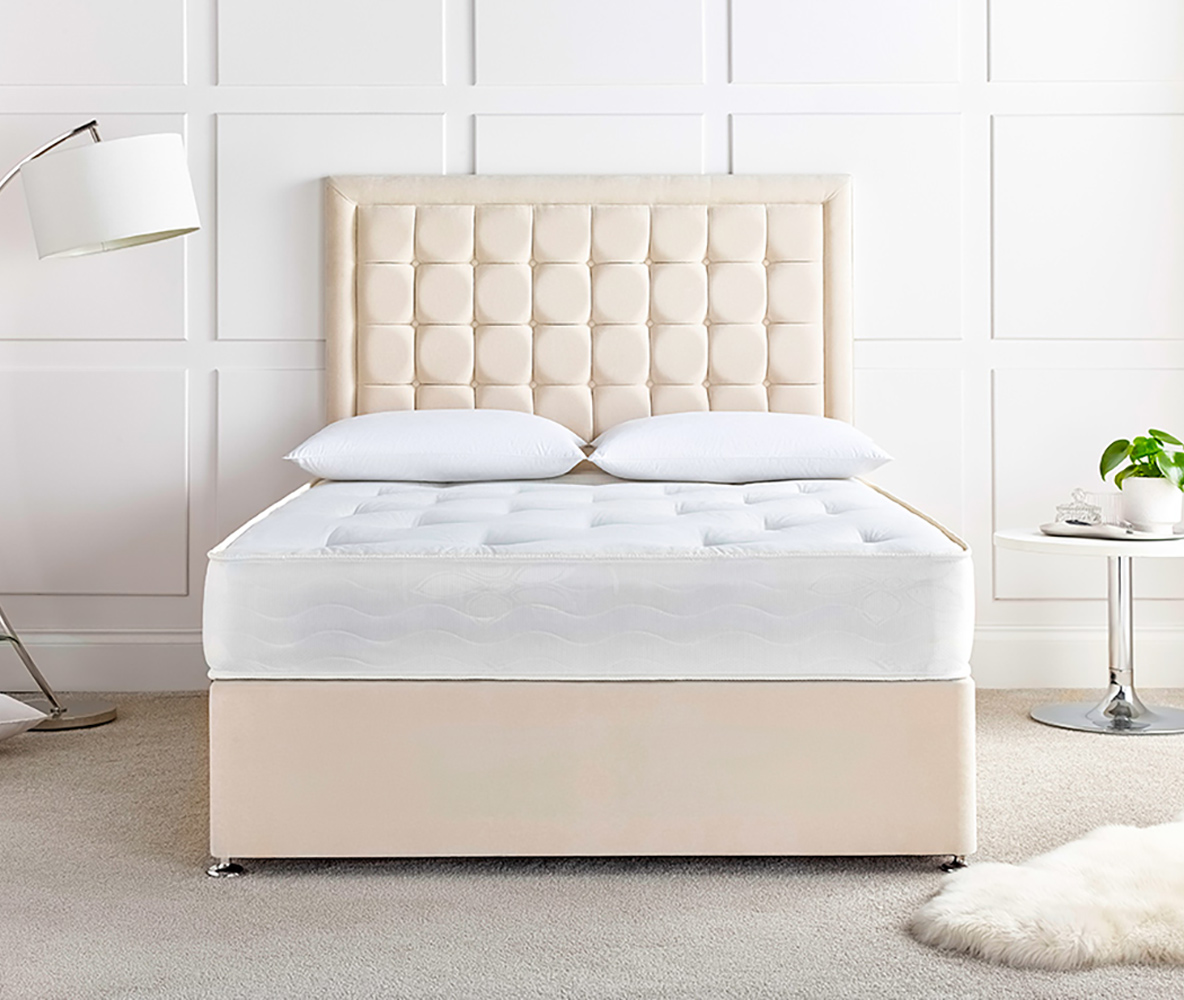
Choosing the right mattress
-
How should a mattress feel?
The common misconception is that a firm mattress is best for a bad back. In reality your perfect mattress will adapt to the contours of your body providing great posture while asleep. This can be achieved by choosing the right tension mattress to suit your body shape, size and weight.
-
How firm should my mattress be?
Your mattress should be firm enough to ensure when lying in your bed your spine is level, your hips and shoulders are supported without being compressed and your body is in its neutral posture position. Whether you are a side, back or front sleeper, your mattress should cradle you in such a way that your profile is in a level, balanced position. Broadly, the heavier you are the firmer your mattress should be. Conversely a slight frame will require a softer mattress to cushion and support you effectively. It is also worth noting that back and front sleepers normally find greater support from the firmer tensions whilst side sleepers prefer softer, more forgiving mattresses to adapt to a greater pronounced side profile. To get the correct level of support, our main contact points – neck, shoulders, lower back, bottom and hips need to engage with the mattress springs. If the mattress is too firm its possible for the spine to raise at the hips and shoulders will either compress or affect the spines natural resting position. If the mattress is too soft the opposite occurs with a dipping of the spine, the hips sink too far into the mattress affecting alignment and increasing the load on our pressure points. Ultimately, you want a mattress to work with you, not against you!
-
Why more springs are better
There is an argument that suggests more springs equal more support and more support equals more comfort. There is a lot of truth in this, up to a point! A decent spring count provides balanced and refined support. Higher spring counts make for more durable mattresses, to explain – each spring does less work thus ensuring their ability to support us over time is greater. That said there is a ceiling number of springs needed to provide decent durability and support. There are one or two brands who use a `volume equals value` approach to their spring counts. Too many springs stiffen mattresses to a degree that they lose their responsiveness and feel. Plus, all that steel in the springs makes for an incredibly heavy piece of furniture!
-
Mattress fillings
The fillings that sit on top of the springs are sometimes known as the fibres, sometimes upholstery. They can make a big difference to the way in which a mattress behaves and responds. In broad terms, the more fillings there are, the more sumptuous the feel of the mattress. The quality and complexity of fillings is really important, 95% of our mattresses use natural materials as they generally create a better sleeping environment and are much better for our planet. Natural materials allow air to circulate efficiently whilst regulating body temperature, wicking moisture and perspiration away from the body. Wool is an ideal filling for a mattress, its naturally elastic, maintaining its form and structure so your mattress retains its comfort. Many manmade fibres struggle to match its natural resilience to pressure over time.
-
What size should we buy?
If you are planning on keeping an existing bedframe, give it or the mattress you are looking to replace a quick measure before coming in store. Not all bedframes *especially older or antique ones run true to today’s mattress sizings. The majority of our mattresses are handcrafted to order, we are able to have them made to suit non-standard bed bases.
Size matters! We recommend you buy the right size bed and mattress to suit your particular needs and requirements. The most comfortable of mattresses can be compromised if you bed is too small. You may have the most loving relationship but having enough space to sleep is one of the most important factors. So, when buying your mattress, we highly recommend you getting the biggest size mattress to match your needs and comfortably fit into your bedroom.
-
How much should I spend?
Our advice is to buy the most comfortable mattress you can afford. A really good handmade, pocket sprung kingsize mattress with natural fillings should last at least 10 years. Expect to pay somewhere in the region of £2000 for a quality branded mattress. I think we’ll all agree that this is a fairly hefty up-front cost however spread it over a lifetime of say 3000 nights, your new mattress will come in at less than 70 pence per night, not quite so bad eh?!
As we age sleep unfortunately becomes more elusive. Buying a great mattress providing excellent support coupled with a wonderful feeling of luxury will help in maximising our chances of a good night’s sleep.
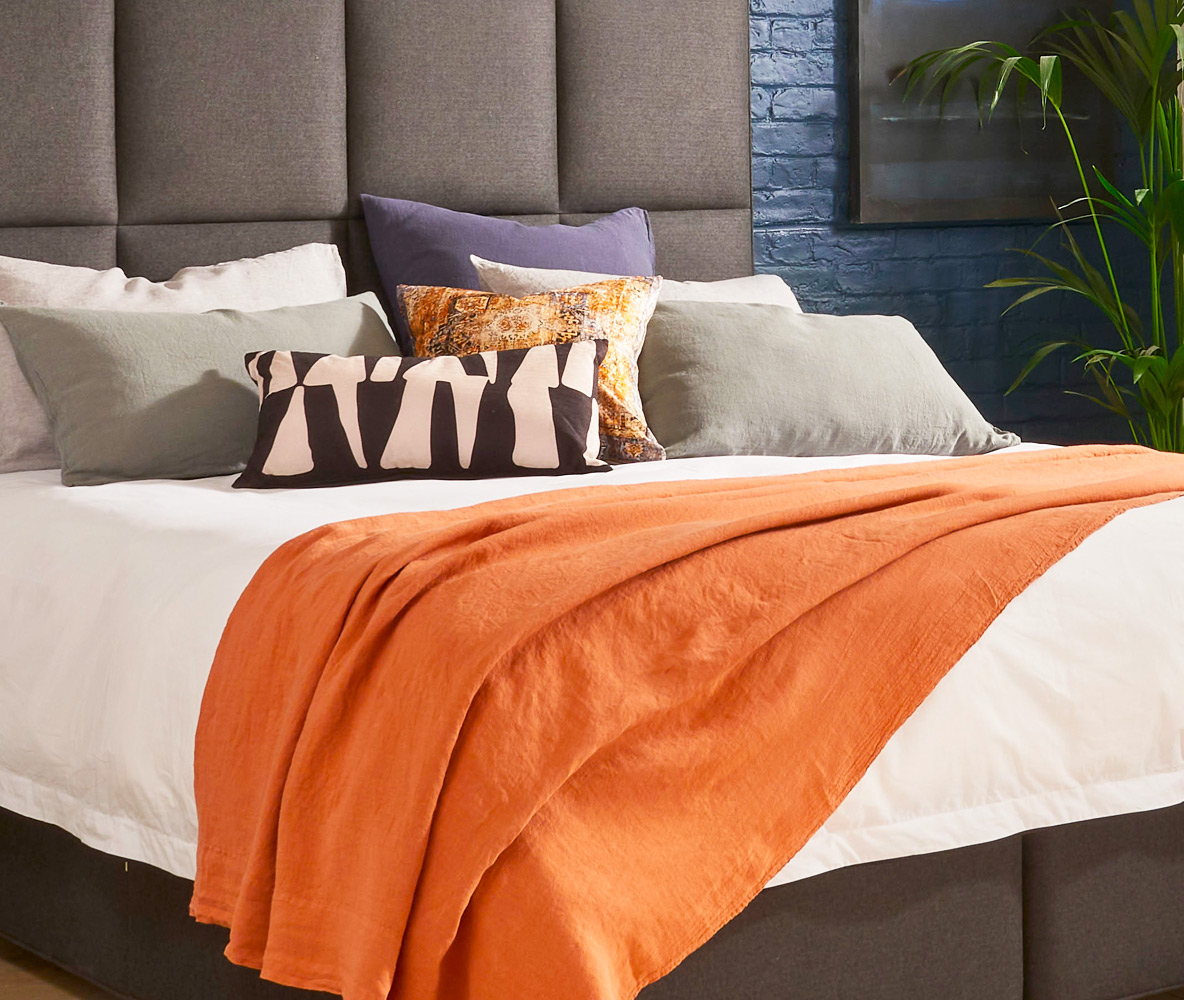
Beautiful Bedding
-
Pillow talk
Pillows are often overlooked when it comes to getting a great night’s sleep. Primarily your mattress provides the support and comfort however combining that with the correct pillow provides the all-important fine tuning to keep your head and neck in perfect alignment.
-
How do you like to sleep?
Are you mainly a side sleeper, back or front sleeper? Here’s a few simple tips to help you choose the right pillow –
Side sleepers require a thicker pillow to support their head and ensure their neck is correctly aligned with your spine. Broad shoulders usually prefer firm pillows to provide the right resistance, smaller more petite frames generally prefer a medium tension.
Do you sleep on your back? If so, try a shallower pillow with medium support. Aligning your head and spine requires a less dramatic approach to that of a side sleeper. Gentle, positive support is enough to provide the right amount of cushioning and stop your head from tilting too far forwards.
Softer pillows best suit front sleepers. A thinner pillow with comforting filling avoids putting unwanted strain on the neck.
-
How what’s inside your pillow affects how you sleep
Hollow fibre or microfibre
Synthetic pillows are often known as microfibre or hollow fibre pillows. The main manmade element is polyester fibres, these are spun together to make denser fillings. Synthetic pillows are often light weight and airy. The hollow gaps between the fibres allow them to breathe well and ensure the air flows freely. Hollow and micro fibre options often sit at the lower end of the pillow price scale tending to have a shorter lifespan than their counterparts.
Feather and down
Duck and goose feather are found in many lower end, medium to firm tension natural pillows. The feathers are cheaper and heavier than duck or goose down.
Down
Down is a cosy and airy choice made from the softest of feathers. They allow a lofty, cloud like feel with gentle levels of support. If you are looking for great comfort and a luxurious night’s sleep, look no further, a down pillow will be right for you!
Combinations of larger feathers and delicate down provide a super mix of more robust support whilst retaining the luxury sleep experience many are after.
Wool pillows
Fleece wool offers outstanding head and neck support. The pillow case is a percale cotton zipped cover which can be removed and washed on a hot cycle. The zip also allows you access to the fibres, and is designed for you to adjust the amount of filling or support the pillow offers. Natural wool is a fantastic thermal insulator allowing warmth during the winter and a comforting coolness during the summer. An interesting fact, dust mites don’t like living in wool. So, it’s a great pillow if you suffer with breathing conditions such as asthma.
Memory foam
As with memory foam mattresses, the main ingredient is Polyurethane with chemicals added to make it more flexible or elasticated. Cool memory foam is viscous or firm, Warm it up and it becomes softer and more flexible. The warmth and weight of our head and neck allow the pillow to adapt and conform to our shape in seconds and it returns to its original shape once heat and pressure are removed.
Latex
Natural latex pillows have a similar feel to memory foam but feel bouncier and will spring back to support your neck. The main benefit of latex over memory foam is it doesn’t overheat plus it is really durable and holds its shape well longer than any other type of filling and is naturally resistant to mould and dust mites.
-
Duvets
A decent duvet can make a world of difference to your sleep quality. If you want to wake up refreshed and revitalised there are two important considerations. Fillings and tog rating.
Regulating body temperature whilst asleep is a key factor in ensuring a great night’s sleep. Finding yourself too hot or cold at night not only affects the depth and quality of sleep but also how we perform and our mood during the next day.
Synthetic fillings are a better choice for allergy sufferers. Manmade fibre duvets are hypoallergenic and far less likely to raise uch issues than feather and down. Synthetics are easier to wash, quicker to dry and overall easier to case for. However, temperature regulating can suffer comparatively to natural fibres.
Natural fibres are a great choice if you’re looking for a soft, lightweight, luxurious duvet. These materials are the most dynamic when it comes to allowing your body to breathe and regulate efficiently.
Tog ratings are designed to act as an indicator telling us how well a duvet traps warm air around you to keep us at a balanced temperature during the night. The thickness or tog of a duvet allows us to understand its insulating qualities. Our duvets range from 4.5 tog (Summer weight) 10.5 tog (all season) 13.5 tog (winter weight).
-
Mattress Toppers
Mattress toppers are increasing in popularity. Initially they were considered a great way of extending the lifespan of an old and tired mattress but now they are being seen to provide or add an extra layer of luxurious comfort and softness.
Placing a topper onto your mattress can be an ideal way to improve the feel of your bed. A soft, cloud like topper can help if you are finding your existing mattress somewhat on the firm side.
Unfortunately, toppers aren’t a `cure all` if your mattress support has failed or the springs are past their sell by date. If you believe either of these to be the case, it’s time to consider a much needed replacement!
-
Mattress & Pillow Protectors
Mattress protectors are an essential way to look after your investment in sleep. They act as a first line of defence against spills and body moisture. Depending on the nature of your need, there are synthetic waterproof protectors which offer barrier protection whilst being made of advanced membranes allowing airflow, keeping our temperature regulated efficiently. The other more luxurious option would be to consider a natural, highly breathable, cotton quilted protector.
These are preferred for their ability to provide the best in temperature regulation and moisture wicking qualities whilst remaining hypoallergenic and naturally lovely and soft.
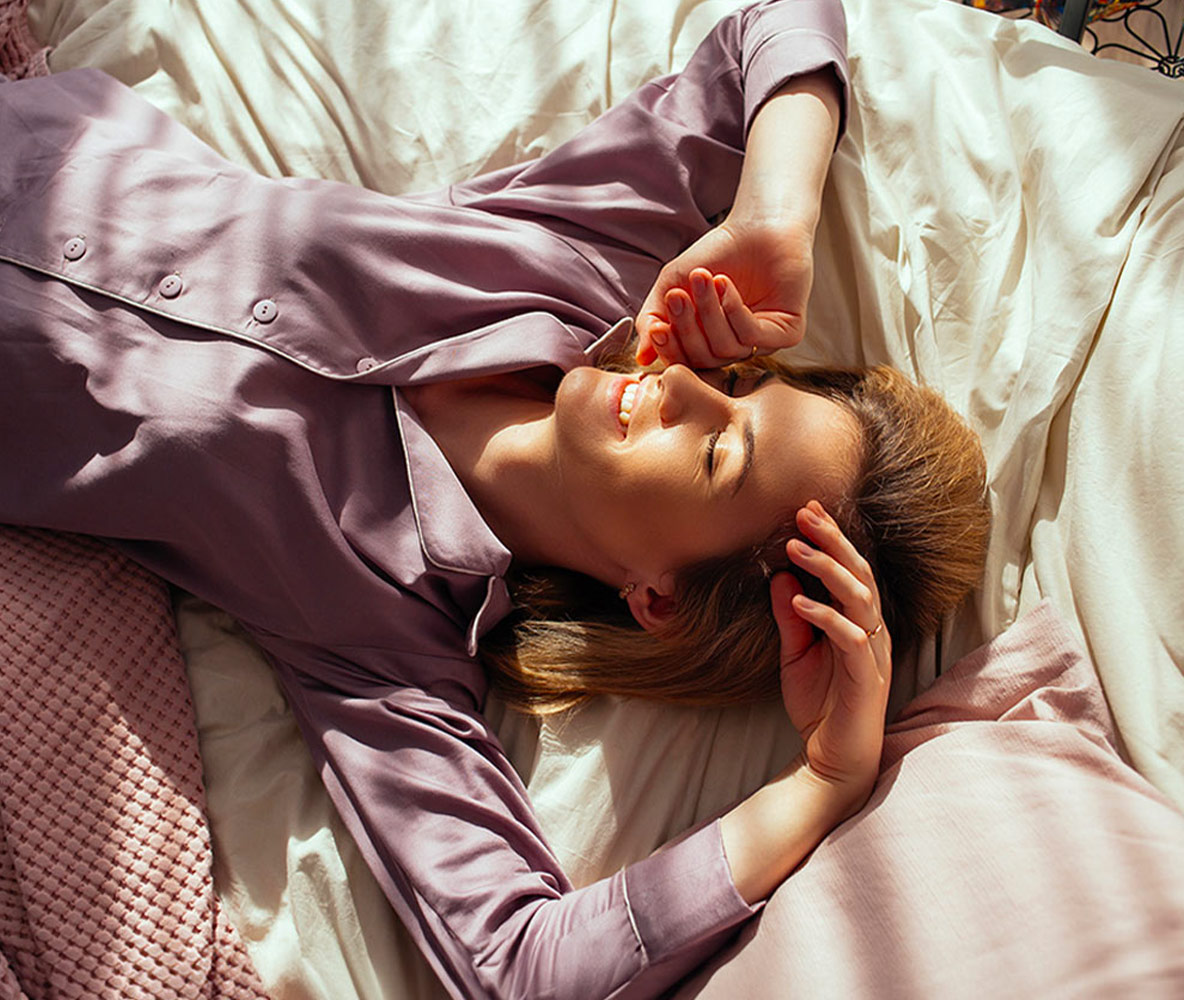
Why do I sleep hot?
-
Why do I get so hot when I sleep?
There are many reasons why we may get hot while sleeping. It may be down to your sleeping environment or perhaps what you’ve eaten or drunk before bed. This article will run through the potential reasons why but also make some simple suggestions that may help with reducing your body temperature and improve our chances of getting a better night’s sleep. People maintain a fairly consistent body temperature during the day however our natural thermostat should reduce this by approximately two degrees Fahrenheit before we go to bed. Sometimes it can be as simple as our body composition or hormone levels that affect our core temperature keeping it higher than we ideally need to get a great night’s sleep.
-
Choosing the right bedding and perfect bedroom conditions
A cool bedroom, breathable bedding and nightwear can help maintain a lower body temperature throughout the night. Its worth checking the temperature in your bedroom, the perfect ambient temperature giving us best chance of a good nights sleep is somewhere between 65 and 68 degrees Fahrenheit/18 to 20 Celsius. Also, it may be worth trying opening a window or switching on a fan, air movement is wonderful for wicking moisture and cooling our bodies temperature. Check your bedding, if your duvet is too dense/thick consider buying a new duvet with a lower insulative rating. Duvet weights are measured in Togs. A 13.5 tog duvet is considered a winter weight or suited to folk who sleep cooler. 10.5 tog is for all seasons and suit those who can regulate their sleeping temperature well. A 4.5 tog or summer weight duvet is ideal for warm night and hot sleepers. Bed linen is another area to consider. Choose light weight, natural fibre sheets, pillow cases and covers for greater breathability and more efficient moisture wicking qualities. We’ve gone into detail before regarding the merits for buying mattresses that are pocket sprung and have natural upholstery, they provide the most efficient method for airflow and are least likely to trap body heat. What we wear to bed at night can make a really difference to how we sleep. Avoid thick, synthetic clothing. Similarly to bed linens, light weight, natural fibre bed wear will breathe well and work with your body to keep an even and regulated temperature whilst you sleep.
-
Sharing your bed
Sleeping partners and pets can influence our temperature at night. The average adult produces 75 and 90 watts of output or heat a night. So, sleeping with a partner, child or pet could increase the temperature in your bed to an uncomfortable level. Consider buying a bigger bed to increase the amount of space between you and your cohabitants. In extreme circumstances, consider the spare room to reduce you core temperature by removing exposure to the body heat of others.
-
Food & Drink
Firstly, its worth touching on the benefits of hydrating well through the day. Your body needs water to produce sweat to help cool itself at night. Try and avoid eating carbohydrate rich meals or spicy foods before bed. Drinking caffeine and/or alcohol can also have a negative effect on your body temperature. Other aspects of food that can adversely affect body temperature at night are eating too much during the day or leaving it too late in the evening.
-
Body composition
Our individual body composition may affect how we perceive our core temperature. Those with more lean muscle mass may produce more heat due to a higher metabolism. Additionally some research shows that people who are heavier may be sensitive to heat and find it tricker to regulate their body temperature at night.
-
Health conditions and medications
Sometimes hormone changes and chemical imbalances have an effect on our body’s temperature. The following two examples are by no means exhaustive but might help offer an understanding as to why controlling your body temperature has or is becoming more challenging. Hormone changes during pregnancy and the menopausal transition can produce temperature spikes commonly known as hot flushes. The spikes in temperature offer a sudden feeling of heat that start in the chest and face then spread to the rest of your body. They often last a few minutes and are uncomfortable and can cause sweating. Hot flushes during the night often disrupt sleep and can cause extreme sweating known as night sweats. Antidepressant medication is the most common medication for temperature imbalances with symptoms such as excessive sweating, temperature spikes and enhanced intolerance to heat leading to problems sleeping. If you are finding sleep a real issue it is advised to speak with fully trained medical practitioners if you are concerned that your medications are adversely affecting your normal sleep habits and patterns.
-
An unusual tip
Try having a warm bath before bed as it is proven to jumpstart the bodies natural want to reduce body temperature, assisting our chance of a better nights sleep.
*How it works – the warmth of the water widen our blood vessels cooling the blood, reducing blood pressure ultimately lowering body temperature helping you cool down faster in preparation for sleep.
